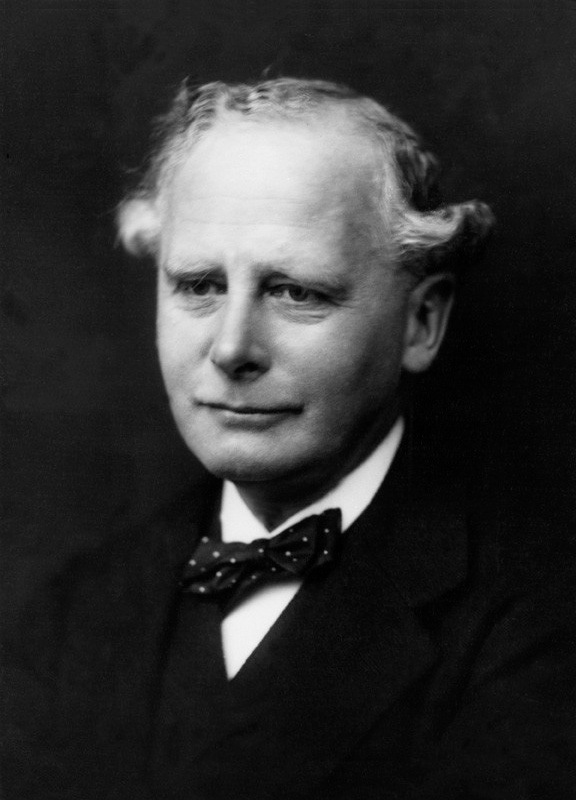Sir Michael Ernest Sadler was an English historian, educationalist, and university administrator. He was the Vice-Chancellor of the University of Leeds. He also worked at the Universities of Manchester.
From 1917 to 1919, Sir Michael Sadler led a commission that looked at the state of Indian Education, called the “Sadler Commission”.
Early Life of Sir Michael Ernest Sadler
Michael Ernest Sadler was born in 1861 into a radical home at Barnsley, England. He died in 1943 in Oxford, England.
His memories from early youth were full of associations with the leaders of the working-class movement in the north of England. As one of his forefathers, Michael Thomas Sadler, was among the pioneers of the Factory Acts.
Sadler recorded:
“I can see how much religion deepened their insight and steadied their judgement, and saved them from coarse materialism in their judgement of economic values. This common heritage was a bond of social union. A social tradition is the matrix of education.”
Education of Sir Michael Ernest Sadler
Michael Ernest Sadler was sent to a private boarding school at Winchester when he was 10 years old.
After his introductory school, he moved to Rugby School in the English Midlands. Here, he spent his adolescence in an atmosphere completely different from the Winchester School.
In 1880, he went to Trinity College, Oxford. He was overwhelmed by John Ruskin. In July 1882, he passed the examinations and gained a first-class degree in Literae Humaniores. A month before this, he had become President-Elect of Oxford Union.
Career of Sir Michael Ernest Sadler
In 1885, he was elected Secretary of Oxford’s Extensions Lectures Sub-Committee. From 1890-95, he was a “Student”(the equivalent of a fellow) at Christ Church, Oxford.
He was appointed to a Director of the Office of Special Inquiries and Reports(government post) and resigned from the Board of Education in 1903. At the University of Manchester, a special professorship in History and Administer of Education was created for him. The work of the educational theorist Catherine Isabella Dodd impressed him.

In 1911, he became Vice-Chancellor of the University of Leeds. At the University of Leeds, a building was named after him in his honor. In 1923, he returned to Oxford as a Master of University College, Oxford.
Leeds Art Club
While he was in Leeds, Sadler became President of the Leeds Arts Club. Leeds Arts Club was founded by Alfred Orage in 1903. It was an important meeting ground for radical artists, thinkers, educationalists, and writers in Britain. It had strong leanings to the cultural, political, and theoretical ideas coming out of Germany at this time.
Using his personal connections with Vasily Kandinsky in Munich, Sadler created a remarkable collection of expressionist and abstract expressionist art at a time when such art was either unknown or rejected in London, even the famous promoters of modernism like Roger Fry.
Sadler co-founded the Leeds Art Collection Fund with Frank Rutter. It was founded to help Leeds City Art Gallery, with the aim of the Fund to bypass the financial restraints placed on the Gallery placed by Municipal authorities of Leeds.
Sadler Commission
At the end of World War I, the Secretary of State for India, Austen Chamberlain, invited Sadler to take the chairmanship of a commission, which the government intended to appoint to inquire into the affairs of the University of Calcutta.
Chamberlain wrote:
“Lord Chelmsford [the Viceroy] informs me that they hope for the solution of the big political problems of India through the solution of the educational problems.”
After some hesitation, Sadler accepted the invitation. Under his direction, the Commission exceeded its initial terms of reference. This result, released in 1919, provides a complete sociological description of the context in which Mahatma Gandhi was campaigning for the end of the British Raj and the independence of India.
On the lines of further investigation, it is possible to dismiss a concept of expanding higher education that greatly exceeds the traditional university image in its journey to link higher education in the 20th century with the increasing availability of educational opportunities to women. Sir Ashutosh Mukherjee, known as the Tiger of Bengal, was a member of this commission.
Prior to the publication of the Calcutta University Report, Sadler gave a private address to the Senate of Bombay University. He put forth his personal findings by surveying the educational movement in India and Britain.
This was characteristic of Sadler’s belief about the interrelationship of all the various levels of education and the importance of teacher training. He warned his listeners about the creation of an educational people in which job hopes could not be met.
Finally, he told the members of Senates:
And in India you stand on the verge of the most hazardous and inevitable of adventures—the planning of primary education for the unlettered millions of a hundred various races. I doubt whether the European model will fit Indian conditions. If you want social dynamite, modern elementary education of the customary kind will give it to you. It is the agency that will put the masses in motion. But to what end or issue no one can foretell.
Honors
From Columbia University, Sadler received the honorary degree LL.D.(Legum Doctor or Doctor of Law) in June 1902. He was awarded CB in 1911 Coronation Honours.
Sadler was appointed a Knight Commander of the Order of the Star of India(KCSI) in 1919.
Read About Simon Commission


One thought on “Sir Michael Ernest Sadler – Early Life, Education & Career”